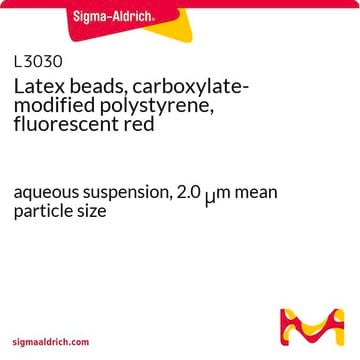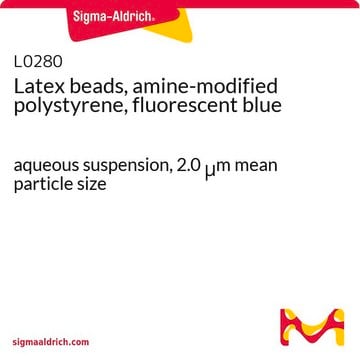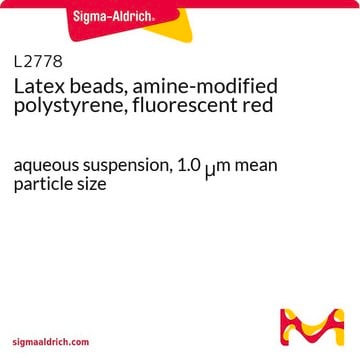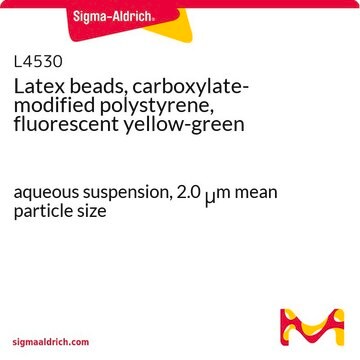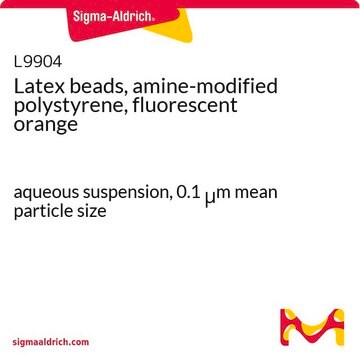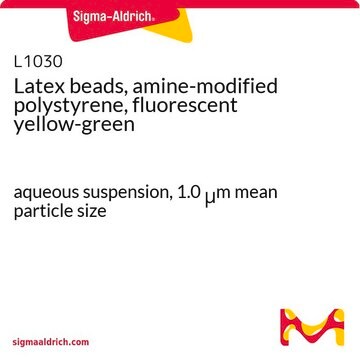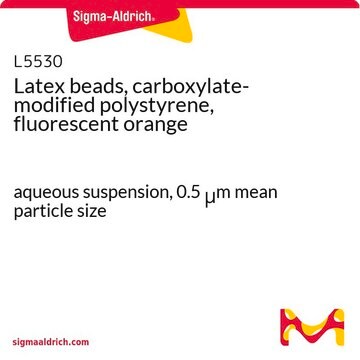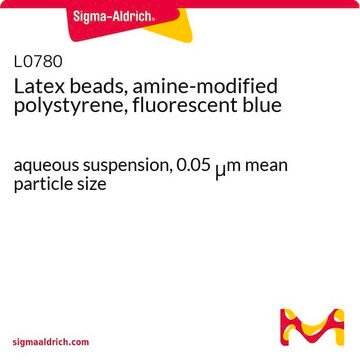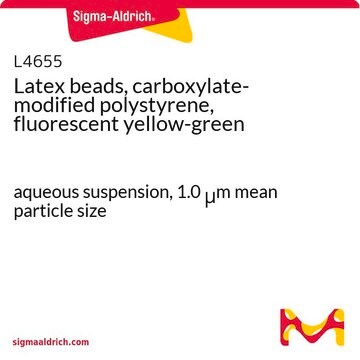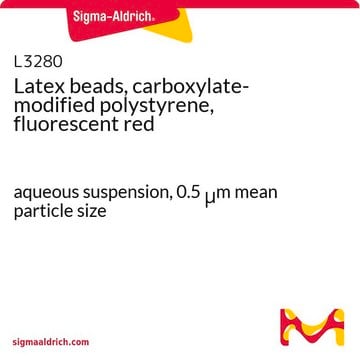The excitation range for this product is 470 nm to 525 nm, and the emission range is 535 nm to 650 nm.
L9529
Latex beads, amine-modified polystyrene, fluorescent orange
aqueous suspension, 2.0 μm mean particle size
Seleccione un Tamaño
MXP 2,231.00
Seleccione un Tamaño
About This Item
MXP 2,231.00
Productos recomendados
Formulario
aqueous suspension
composición
Solids, 2.4-2.6%
tamaño medio de partícula
2.0 μm
fluorescencia
λex ~520 nm; λem ~540 nm
¿Está buscando productos similares? Visita Guía de comparación de productos
Aplicación
Acciones bioquímicas o fisiológicas
Código de clase de almacenamiento
10 - Combustible liquids
Clase de riesgo para el agua (WGK)
WGK 3
Punto de inflamabilidad (°F)
Not applicable
Punto de inflamabilidad (°C)
Not applicable
Elija entre una de las versiones más recientes:
¿Ya tiene este producto?
Encuentre la documentación para los productos que ha comprado recientemente en la Biblioteca de documentos.
Los clientes también vieron
-
The specified output emission is 540nm, which is green. However, the beads are labelled "yellow to orange". When exciting with green I detect fluorescence at 600nm on my spectrometer, which is yellow to orange. Is 540 the actual expected emission? or 600?
1 answer-
Helpful?
-
Active Filters
Nuestro equipo de científicos tiene experiencia en todas las áreas de investigación: Ciencias de la vida, Ciencia de los materiales, Síntesis química, Cromatografía, Analítica y muchas otras.
Póngase en contacto con el Servicio técnico